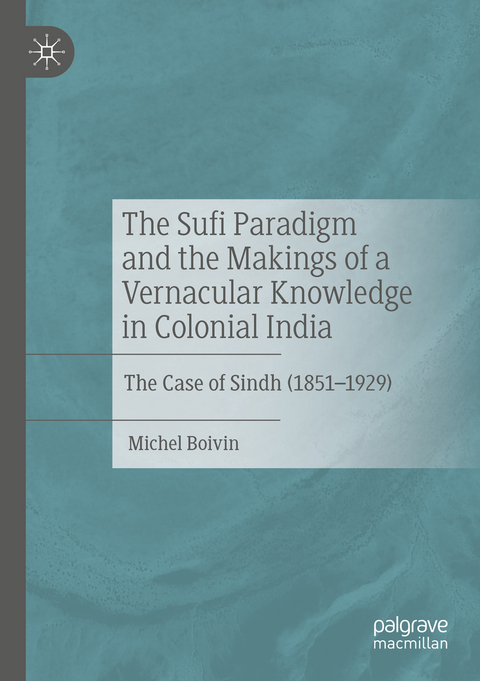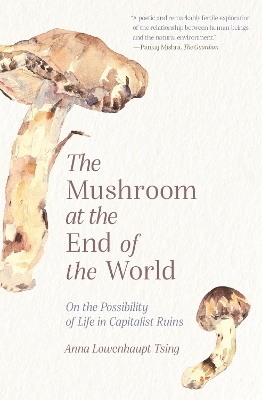
The Sufi Paradigm and the Makings of a Vernacular Knowledge in Colonial India
Springer International Publishing (Verlag)
978-3-030-41993-6 (ISBN)
This book demonstrates how a local elite built upon colonial knowledge to produce a vernacular knowledge that maintained the older legacy of a pluralistic Sufism. As the British reprinted a Sufi work, Shah Abd al-Latif Bhittai's Shah jo risalo, in an effort to teach British officers Sindhi, the local intelligentsia, particularly driven by a Hindu caste of professional scribes (the Amils), seized on the moment to promote a transformation from traditional and popular Sufism (the tasawuf) to a Sufi culture (Sufiyani saqafat). Using modern tools, such as the printing press, and borrowing European vocabulary and ideology, such as Theosophical Society, the intelligentsia used Sufism as an idiomatic matrix that functioned to incorporate difference and a multitude of devotional traditions-Sufi, non-Sufi, and non-Muslim-into a complex, metaphysical spirituality that transcended the nation-state and filled the intellectual, spiritual, and emotionalvoids of postmodernity.
lt;p>
Michel Boivin is the Director of the Centre for South Asian Studies (CEIAS), affiliated with The French National Centre for Scientific Research (CNRS) and The School for Advanced Studies in Social Sciences (EHESS), France. He holds a PHD in Oriental Languages, Civilisations and Societies from Sorbonne University. He was trained in contemporary history and anthropology, with specializations in Islamic and South Asian Studies. He has authored or edited fourteen books, the most recent of which are The Hindu Sufis of South Asia, Discovering Sindh's Past (with Matthew A. Cook and Julien Levesque, 2019), Devotional Islam in Contemporary South Asia (with Remy Delage, 2015), and the Historical Dictionary of the Sufi Culture of Sindh in Pakistan and in India (2015).
Chapter 1: The building of colonial knowledge and its aftermath.-From culture to episteme: Vernacular knowledge and the Sufi paradigm
Scope and objectives.-Part 1: Colonisation and the Shaping of Vernacular Knowledge.-Chapter 2: The set-up of the colonial knowledge on Sindh.-Introduction.-Knowledge and its agents in precolonial Sindh.-Sindhi as a distinct language.-The era of standardisation: Language and script.-Translating, printing, and the making of the Sindhi munshi.-Grammar and the dictionary.-Conclusion.-Chapter 3: The transmission of colonial knowledge.-Introduction.-The colonial knowledge of the society.-Education for transmitting colonial knowledge.-The formalisation of colonial knowledge through gazetteers.-Conclusion.-Chapter 4: Knowledge, Sufism, and the issue of a Vernacular literature.-Introduction.-Richard Burton, or the Orientalist Ethnographer.-Burton's ethnography of Sindh and his principle of intercession.-Literatures as a "weapon in our hands".-Conclusion .-Part 2: Social Mobility and The Makings of the Sufi Paradigm.-Chapter 5: the archaeology of the Sufi paradigm.-Introduction.-The printing of the Shah jo Risalo.-The Sufi paradigm and the issue of a Persian pattern.-The Sufi paradigm at its earliest stage.-Conclusion.-Chapter 6: Social mobility and the set-up of a Sufi paradigm.-Introduction.-The spread of the middle class and the issue of progress.-The intelligentsia and the objectification of the Shah jo Risalo.-Colonial Sufism as antiquity.-Conclusion.-Chapter 7: Sufi knowledge (ilm tasawuf), sufi culture, and the sufi paradigm.-Introduction.-Mirza Qalich Beg, or the Exemplary Sindhi Scholar.-Bibliography, lexicography, and the Sufi paradigm in Mirza Qalich Beg's work.-Sufi Knowledge (Ilm Tasawuf) and the Sufi paradigm.-Jethmal Parsram Gulraj and the Sufi culture.-Conclusion.-Chapter 8: The deployment of the Sufi paradigm.-Introduction.-The Sufi paradigm beyond the Shah jo Risalo (or the second step of the SP).-The Sufi paradigm beyond Sufism and Islam (third step of the SP).-The Sufi paradigm beyond Sindh (fourth step of the SP).-New trends in early twentieth century knowledge: The spread of the qisso.-The Sufi paradigm and the printed knowledge market.-Conclusion.-Part 3: Challenging the Sufi Paradigm in the Era of Communalism.-chapter 9: The Sufi paradigm and the normative regimes of knowledge.-Introduction.-The codification of Islam and Hinduism: Sanatan dharma versus Umma.-Reformism and Universalism among the Hindus.-Sunni Reformism.-The Church Missionary Society.-The new conjuncture of the 1920s.-Conclusion.-Chapter 10: the Sufi paradigm and the devotional regimes of knowledge.-Introduction.-The attempt to create a Daryapanth.-The Hinduisation of the Nanakpanth.-The Shia regime of knowledge in the public sphere .-From Khoja to Ismaili: The Aga Khani regime of knowledge.-Conclusion.-Chapter 11: oral knowledge and the Sufi paradigm.-Introduction.-The figure of the bard.-Oral knowledge and the devotional corpus.-The bardic performance.-Conclusion.-Chapter 12: Conclusion: What is vernacular in the Sufi paradigm?.-Appendix.
| Erscheinungsdatum | 03.06.2021 |
|---|---|
| Zusatzinfo | XV, 318 p. 9 illus., 8 illus. in color. |
| Verlagsort | Cham |
| Sprache | englisch |
| Maße | 148 x 210 mm |
| Gewicht | 440 g |
| Themenwelt | Sozialwissenschaften ► Ethnologie |
| Sozialwissenschaften ► Soziologie | |
| Schlagworte | Colonial Knowledge • Colonization • Hinduism • India • indigenous epistemology • Islam • Knowledge • new elite • Sufism • Vernacular Knowledge |
| ISBN-10 | 3-030-41993-2 / 3030419932 |
| ISBN-13 | 978-3-030-41993-6 / 9783030419936 |
| Zustand | Neuware |
| Haben Sie eine Frage zum Produkt? |
aus dem Bereich


